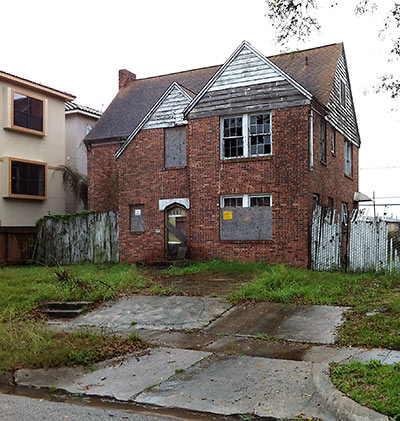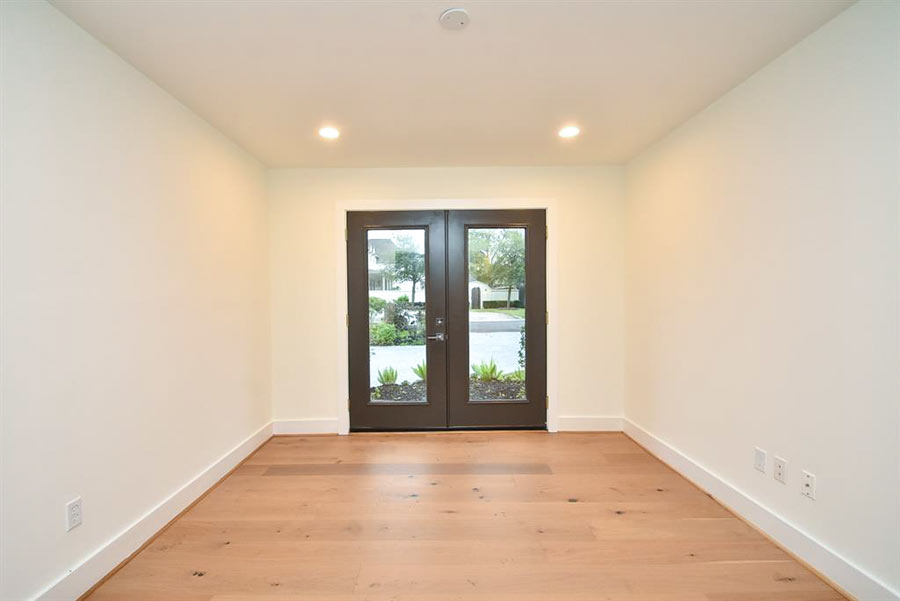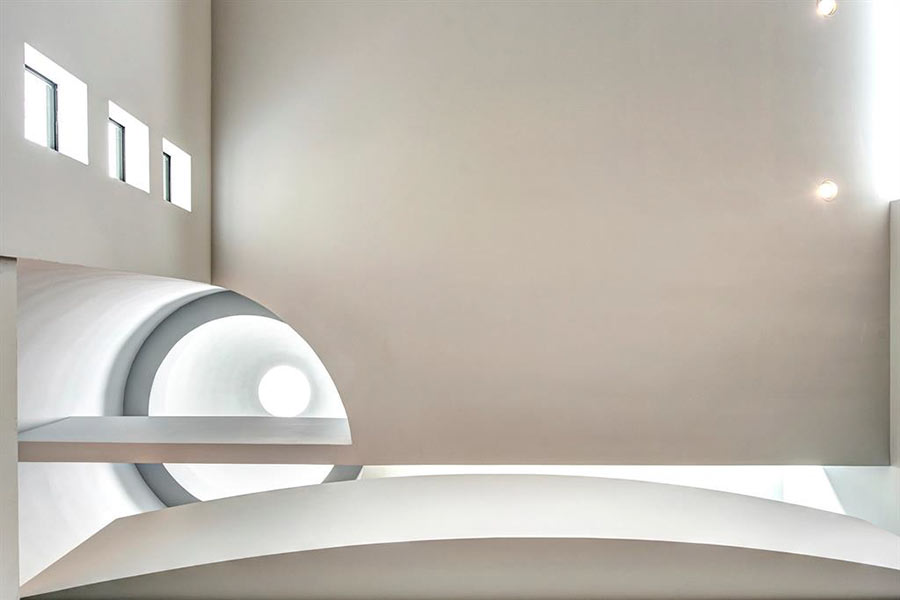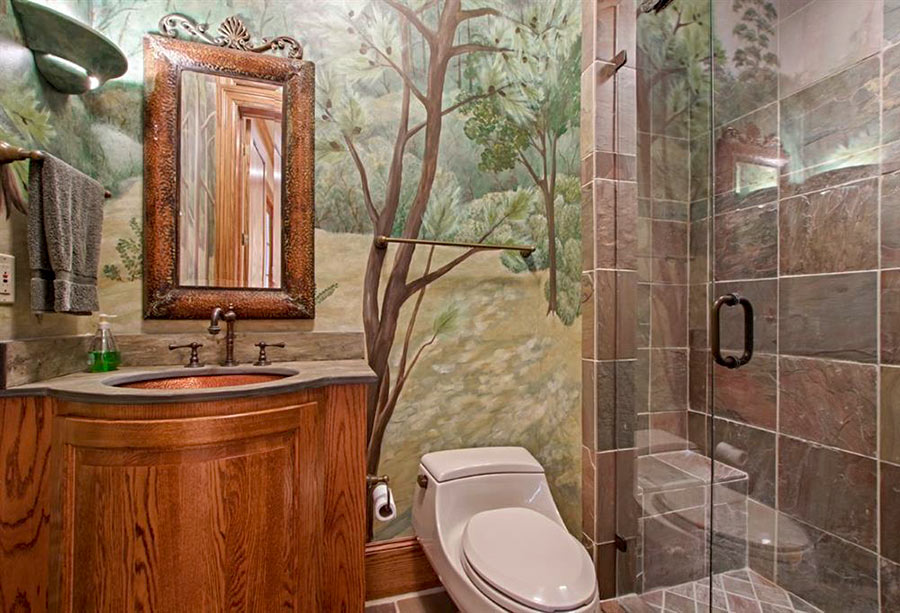
After waging a year-long “all out war” against this abandoned house near the corner of Prospect and Live Oak in Riverside Terrace, a Swamplot reader declares “I feel like I won.” How? “The house went up for sale this past week, exactly two weeks after a yellow ‘Dangerous Building’ violation was nailed to the tree out front by the city (following one of several of my complaints to the city’s Neighborhood Protection office — previous complaints generated violations notices for weeds and trash).” The listing for 2536 Prospect features photos of the home’s foreboding exterior with clear warnings from the listing agent: “Dangerous Building — No access!” and “Do NOT Enter!” This hoped-to-be-vacant lot could soon house your dream home! Once it’s bought and the house gets torn down, that is.
***
But in the meantime, our tipster wonders, what else hath all these complaints wrought? At least concerns that — now that the home is in a new category — the owner might be cut more slack by the city. “My question is:Â Now that the house is listed as a ‘Dangerous Building,’ can the current owner shuck responsibility for correcting the conditions? What liabilities is the new owner purchasing when buying a building that already has been certified as such by the city?”
- 2536 Prospect St. [HAR]
Photo: Swamplot inbox





I used to live across the street from this house. It has had various yellow violations nailed to it for years. I always heard that it was just about to get demolished. I figured it would have happened by now when they started to put in the townhomes there.
As someone that bought a building *after* it got the “Dangerous Building” tag, I can (almost) promise you this will get knocked down. It’s nearly impossible to bring a building back to life (so to speak) once it’s gotten the “DB” label. It has to be gutted and brought to today’s codes. Meaning all new electrical, plumbing, windows, insulation, etc. Even studs behind the walls need to be added, rafters need to be updated, firewalls possibly added, etc.
.
I’m sure the neighbors will be happy to see it knocked down and rebuilt. However, if you have a historic building and press the city to tag it DB, don’t get mad when it’s knocked down as it’s fate is now sealed.
.
I would have never ever done bought my DB building to fix (and won’t do it again) except for the fact it was sandwhiched in-between two of my other buildings so I wanted to clean it up.
.
Big mistake. If I had to do it again I’d have left it to rot till the previous owner sold it for land and it got knocked down.
.
Which reminds me. Candice took some nice “before” pictures of my “DB” building. I need to ask her to come out for the ‘after’ shots :)
The City playing God… With all City intervention, you have to ask yourself, what is it really achieving? I agree the fate of this building is sealed. Whereas, if the true objective is historical preservation, there would be incentives (not citations and penalties) for improving it. Overall, I have come to conclude that the City is a conglomerate of different functions working against each other. If one area flexes its muscles, it achieves a totally different purpose than a different area. And if anything you own has the City’s involvement, regardless of which function you are dealing with, you might as well stick a 2×4 where the sun don’t shine.
It’s not the old houses that are the problem-the absentee owners/investors/holders are the true blight in Houston.
I’m all for preservation, too, but not everything old is worth keeping simply by virtue of its tenure.
“NOO!!! Save the Historeeeeeee”
I nominate turds for CotD :)
mel: The city gets property tax revenue for ‘free’ from these property owners. Those owners are normally also paying insurance, upkeep (either on their own or via liens / fines), and possibly a mortgage (and if not a mortgage, at minimum the opportunity cost of what their equity could otherwise be doing). Some even have utilities on. All told, an owner “sitting” on a property like this is taking a bath with all sorts of expenses and no income to show from it.
.
i.e., They’re not doing well.
.
The bigger question is WHY are these properties sitting around like that? If the owners are taking a loss each month, what would be your guess? I have my own theory but I don’t want to sound like a broken record in each post.
My guess is that these “investors” are holding out for a payday.
Derelict buildings don’t just randomly get tagged out of the blue. Usually it’s the result of a long series of complaints from neighbors and other concerned parties.
.
As the (now) past President of a Super Neighborhood, I’ve seen and been a part of the complaints myself. I’ve found that buildings become derelict for one of four reasons. The first – the owners are broke. Grandma’s already choosing between her medicine and groceries; fixing the house just isn’t going to happen. The second are buildings that have fallen through the cracks. The original owners passed away, and their grown kids inherited the property. The kids live far away and have no idea the property is in the condition it is. Then there are the inexperienced real estate investors. Joe Blow buys an old apartment building. He figures he’ll invest $200,000 and turn it around. He soon finds out that it actually needs $400,000 in repairs; or he realizes he never had $200,000 to spend in repairs – the building keeps deteriorating. Finally, there are a few owners who fit the stereotype of the ‘slum lord’ – who let properties deteriorate on purpose. Thankfully these are less numerous than many people think.
.
Of course none of this is really important to the good investors who just want to buy buildings fair and square, renovate them, and make some money in the deal. To them, my advice would be: if you’re fixing up a derelict building, get to know the neighbors. Talk to the people living next door, but also become a regular at the civic association and Super Neighborhood meetings. Get to know what the complaints are, and be open about what you plan to do. Things will go a lot smoother.
ZAW: Nice post. I agree with most of it.
.
One thing I’ll note is I typically meet with neighbors (if it’s a smaller place) or local civic groups (if it’s a bigger place) to let them know who I am and what I’m going to do to the place. I give them my cell and ask them to call if there are issues (workers being loud/messy, crime so I can respond quicker, etc.). I try to explain that calling me will get it fixed. Calling 311 will just make my life hell and slow things down.
.
Since the story is about the house above, I’ll use my “DB” building I purchased which I mentioned in my comment. When I bought it, I went to all the neighbors (they were all behind the property). Gave them my name/number, told them to call me, etc. I know the building was an problem for them in the past. I also knew they were active armchair 311 warriors and I wanted them to know I was there to improve it.
.
They made my life hell. The prius patrol basically lived at the property waiting for one of my guys to leave a piece of sheetrock outside unattended (in the back yard mind you) so I could get a ticket. I spent more time fighting with the city than fixing the place up.
.
To this day the neighbors behind these properties continue to be a pain in the ass. They call 311 all the time about ANYTHING in the back yard (rather than calling me. And yes, the BACK YARD). And considering just a short time ago this was an abandoned boarded up building that was being tagged with graffiti every day, people camping inside, people illegally dumping, etc. You’d think they’d have a different attitude about what I was doing. After I, I was the one doing the work and spending the $ while they were wearing out the ‘3’ and ‘1’ buttons on their phone.
.
It really made me jaded towards the role some neighbors and the city play. I put a lot of blame on them for other similar buildings I see as I for one don’t want to go though it again.
.
TL;DR: While a beat up building might be the fault of a lazy owner that doesn’t mind eating the cost, the bigger question is why such (often prime location / valuable) properties are not bought and turned around more often.